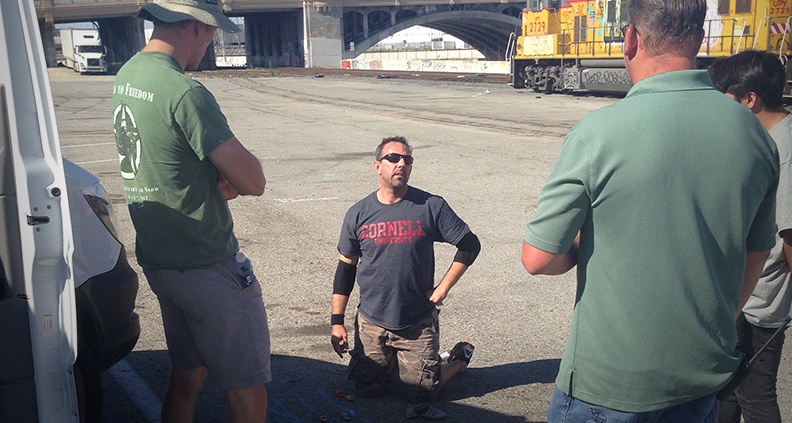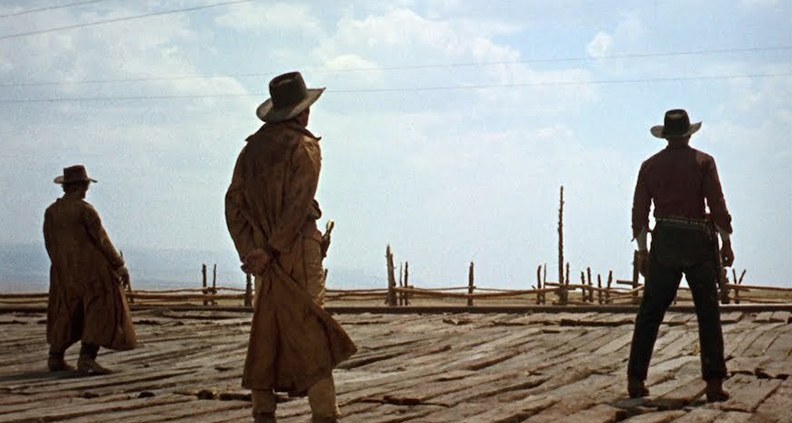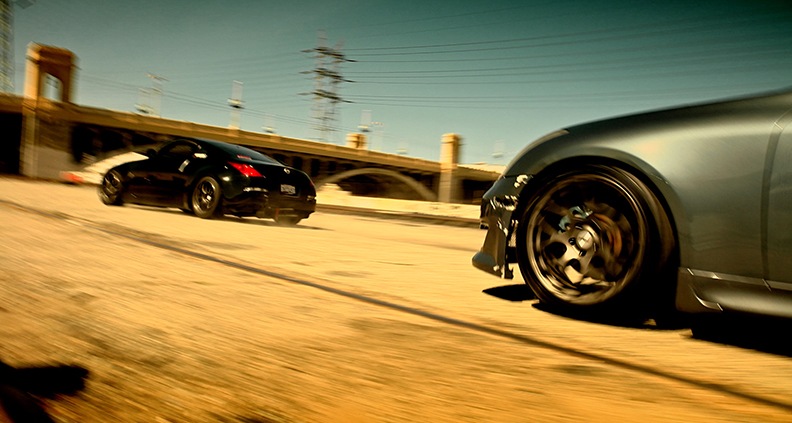Building a Better Stunt Sequence with the Author of ‘Action Realism’
Action movies may not be everyone’s cup of pyro-packed, slo-mo exploding tea. But fistfights, fast cars and high-flying feats of swashbuckling stunt work have been a part of the foundations of cinema from the very beginning—just go back in time and monitor the heart palpitations of audience members thrilling to the visceral pleasures of The Great Train Robbery or The Thief of Bagdad. And in today’s international film marketplace, action is more important than ever.
But just as in other areas of the filmmaking process, the grammar of film action requires the steady hand of a storyteller. And in this case, that means the expert stunt performers and coordinators working to make the unlikely things we see onscreen seem as real as possible—people like veteran action director Lawrence Ribeiro, author of the new book, Action Realism: The Art of Action. In Part Two, Ribeiro will takes a step-by-step look at the process of executing a quality action movies sequence on an indie film budget. But stay tuned for that.
In Part One, we speak to Ribeiro about his long career as an Action Director and the development of his signature “Action Realism” technique. Here’s the conversation:
LAWRENCE RIBEIRO AND ‘ACTION REALISM’

Can you describe how your career in action got started?
Ribeiro: I started by earning a reputation as a dirty cameraman—I’d do whatever it took to get you that hero shot! A lot of directors know story but are not proficient with stunt players, action or movement. So I would “technically” direct sequences to get the action into the camera. I was lucky enough to work with many different talented stunt players, each bringing a different skill set: cars, bikes, parkour, etc. That led into doing “Previs” (pre-visualization), a tool that shows the director and producers what an action scene will look like or cost. It’s a lot like doing a low-budget action sequence. I would shoot, direct and edit. You really sharpen your skills this way.
Can you describe what an “action director” is, exactly?
Ribeiro: An action director is the one who sees the vision [of the action sequence] through, usually in collaboration with a stunt coordinator. The 1st unit director is more concerned with story and conveying emotions with actors, whereas the action director is deals with physical emotions and movement. A lot of times the 1st unit director gets the credit, when in fact it’s the action team/2nd unit director that creates the action sequences. It’s a unique set of skills that creates a different product. The term really came out of Hong Kong with fight directors which evolved into Action Directors. And in LA, you can unfortunately be boxed into being a car guy, fight guy, etc. In Europe it’s a different nomenclature and a different system, too.
When do you first recall being impressed by an action sequence in the movies (or TV)—is there any particular film that inspired you to pursue this career?
Ribeiro: In terms of visual impressions, that would have to be Bullitt. That car chase is legendary and still holds up today. Bruce Lee was a big influence, too. And most people don’t know that the first action stars were women, out of Hong Kong even before Bruce came along. These women were doing everything back in the day. These gals were kicking ass! You can’t discount the Bond films either. They set the standard back in the day.
What, to you, defines “action” and “action realism”?
Ribeiro: In my opinion, there is a difference between a stunt and “action”—a bit like the difference between “plot” and “story.” A stunt can be complicated, labor intensive and even dangerous and only last a couple of seconds. Action is about how it’s assembled. And with action, you can kind of cheat it. I came up with the term “Action Realism” years ago, but it took some time to really define it.
Which is how?
Ribeiro: Bear with me. I’ve been traveling for over three years, mostly in Europe. On top of that, I visited the [locations of] top action sequences—multiple Bourne and Bond sequences, Ronin, Transporter, Mission Impossible, etc. In Granada, Spain, I visited where they shot Spaghetti Westerns, particularly Once Upon A Time in the West and Fistful of Dollars. I knew that Sergio Leone was heavily influenced by Edgar Degas. Degas threw out the concept of the “rule of thirds” When you saw Clint [Eastwood] in his gunfighter’s stance, you saw the brilliance of Leone—influenced by Degas—and a star was born. Action Realism gets you to look at these things closely and make it your own.
Action Realism gets away from CGI and works on the realism of it. I’ve street-raced for 20 years, been in fights, toured conflict zones, been trapped in the mountains. I was living. You develop instincts and skills from living. It’s important that you become aware of them and develop them as strengths. You have to live a life that is interesting and bring that to the table [when conceptualizing action sequences]. I go into greater detail in my book. The above is a bit of a backstory and a perspective to look at.

What do you see as the roll of GGI in action filmmaking?
Ribeiro: CGI is here to stay. There’s nothing I can do about it. I embrace it, because it’s a part of Hollywood now. Sometimes CGI is used well. In the Antman movies I would say it’s clean and integrated, the right amount of practical stunts with the right amount of CGI. The Planet of the Apes series are mostly CGI and they’ve done an amazing job. Almost every pixel has been manipulated. What I do know is that audiences can sense when something is real vs. CGI. All I’m concerned with is what I’m doing, and I’ve followed a different path from many. So dare to be different and just go for it!
What do you think the future of action will be?
Ribeiro: Well, I hope people take chances and start creating exciting projects, because if you don’t, Hollywood will continue to focus on comic book movies, and the art eventually dies. In Mainland China now there is no action infrastructure. The Jackie Chans, Jet Lis, etc. are getting too old. It’s slowly disappearing. It’s very rare to see a martial arts school, too. We’re talking about grass roots stuff here. The projects that I’m working on are experimental, but you can’t say that. Remember: somebody will try to label you. Fuck it. It’s your life. Know the rules—then break them! I work with the best stunt players and post people on the planet and it’s never about the budget.

To learn more about Lawrence Ribeiro, visit his website. Stay tuned to this blog for Part Two of our interview, coming soon. Ribeiro’s book, Action Realism: The Art of Action, is available now.
Learn how to become a Member of Film Independent by visiting our website. Be sure to follow us on Twitter, Facebook and Instagram and don’t forget to subscribe to Film Independent’s YouTube channel.
(Header: Lawrence Ribeiro on set with his crew)